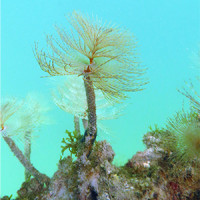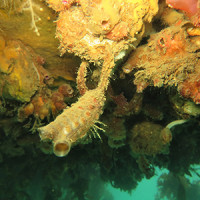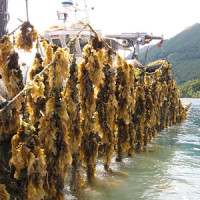A reminder to look out for marine pests in Canterbury this summer
Boaties are being urged to check and clean their hulls to help stop the spread of marine pests in our harbours before hitting the water this summer.
That’s so marine pests, which have the potential to severely damage our marine ecosystems, don’t spread further in our waters.
The three main marine pests to look out for in Canterbury’s harbours are Mediterranean fanworm, Clubbed tunicate and Undaria.
Play your part
Manager Biosecurity Parks and Forests Carl Diamond said it’s important boaties play their part in protecting Canterbury’s beautiful waterways.
"The primary pathway that unwanted marine pests are spread is via marine vessel movements. It might seem like a small thing, but when you keep a clean hull you are protecting our marine biodiversity, our kai moana and our local economy," he said.
Carl said marine pests pose a significant risk to the waterways in our region.
"They tend to outcompete our native species and they can be very difficult to eradicate once they are here," he said.
"That risk is becoming greater as marine vessel movements increase and our waters warm," he added.
Carl warned spreading a marine pest also comes at a cost.
"Transporting marine pests has the potential to cost millions of dollars to the taxpayer, ratepayer and affected industries, not to mention the impact on our native species," he said.
What to look out for
Keep an eye out for these pests and report any sightings:

Sabella Spallanzanii
Mediterranean fanworm (Sabella spallanzanii)
The Mediterranean fanworm is a large worm that has a long, leathery tube that is pale brown in colour.
The tube is usually fixed to a hard surface and grows up to 60cm in length.
They have long tentacles at the top of the tube that look like a spiral fan, which are either orange, purple or white.

Clubbed tunicate
Clubbed tunicate (Styela clava)
Clubbed tunicates have a long, club-shaped body on a short, tough stalk.
The stalk tapers to a disc shape at its bottom, which anchors them to hard surfaces.
They can grow up to 160mm in length, and their surface is tough and leathery, ranging in colour from brownish to white.

Undaria
Undaria seaweed (Undaria pinnatifida)
Mature plants are brown, green and yellow in colour and can grow 1-2 metres tall.
The plant has a distinct mid-rib stem up the middle of the plant and a spiral shaped reproductive structure at its base.
Juvenile plants are green and appear as a single leaf.
Preventing spread
To help prevent the spread of marine pests and to protect the waters we love, please:
- Check your boat hulls for marine pests.
- Book a haul out and clean, if necessary.
- If moving between regions, check regional rules on hull cleaning before you depart.
When cleaning your hull, do it right. Taking shortcuts can make the problem much worse. You must ensure that no contaminants such as marine pests are discharged into the water during your cleaning process.
How to report sightings of pests
Ministry for Primary Industries pest and disease hotline
Call the Ministry for Primary Industries pest and disease hotline on 0800 80 99 66.
If possible, please take photos and record the location. The location could be the name of a vessel and where it was moored, or the physical location if it was found on the seafloor or structures. Find out more about how to report a pest with the Ministry for Environment.
Find-A-Pest App
If you come across something out of the ordinary, simply upload a picture to the app and a Find-A-Pest specialist or the iNaturalist community will help identify it.
If your observation is considered a potential biosecurity threat, this will be forwarded to Biosecurity New Zealand to contact you if necessary.
If taking a photo of a vessel, be sure to capture the name and its location for tracing purposes.
To find out more about the app, visit findapest.nz or email help@findapest.nz.
For more information
For more information and resources on marine pests in Canterbury, visit: Marine pests | Environment Canterbury (ecan.govt.nz).
